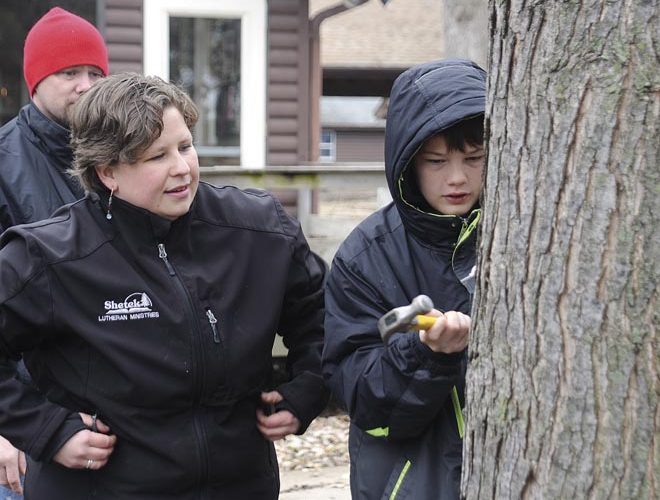
Sugarbush affair fills stomachs with food, minds with knowledge

By Per Peterson
Katie Chapman has gotten over the embarrassment of tapping an oak tree while leading her first syrup tapping field trip at Lake Shetek Lutheran Ministries. In fact, today — as a seasoned guide and director of Environmental Education Shetek Lutheran Ministries — Chapman shares that anecdote freely and is open to laughing at herself.
That adventure four years ago not only gives Chapman a good story to tell as she gives tours, it also has become part of the learning experience for today’s students.
“Everyone was like, ‘Why isn’t sap running out?’ Well, I don’t know, maybe it’s not running today,” she recalls saying. “I was new, I didn’t know. It was a good lesson on how to identify.”
Chapman applies that story to her teaching today as she gives people a close-up look at tapping for maple syrup. On Sunday, Chapman led a pair of tours during the annual Shetek Sugarbush event, teaching youth and adults everything from identifying maple trees, to tapping them for sap, to the evaporation process. Guests were also invited to taste the unadulterated sap, as well as raw, unfiltered maple syrup.
Chapman truly has learned from her mistakes and has become an expert on maple trees and drawing sap from them. She said leaves are not a good way to identify maple trees in the winter. Instead, there are a number of identifiers to look at, including bark, branches and the root system.
“All maple trees have nice, thin bark,” she said. “The bark looks like paint peeling off.”
For more on this article, see this week’s Headlight-Herald.
